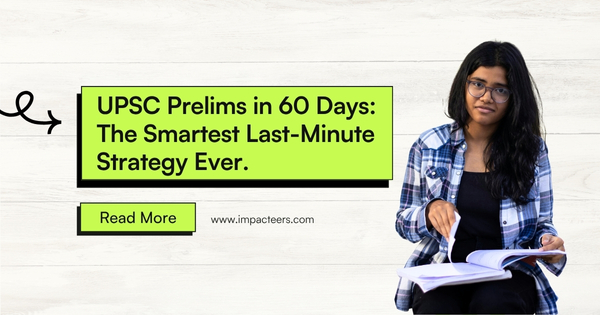Perfect Resume for Dream Job — that’s what every job seeker dreams of creating.. It’s not just about the paycheck or the job title, it’s the feeling that your career, your values, and your skills have finally aligned. It’s about waking up excited to go to work, knowing you’re doing what you love and what you’re good at. But getting there doesn’t happen by accident. For me, the turning point was building a resume that didn’t just list my jobs, it told my career story.
In this blog, I’ll walk you through my honest experience: the setbacks, the breakthroughs, and the exact steps I took to craft a resume that opened doors I once thought were out of reach. Whether you’re starting out, feeling stuck, or ready to switch paths, this guide will help you turn your resume into a powerful Career GPS that leads you to your next big opportunity.
To explore more>>https://blog.impacteers.com/
Let’s get into the lessons that changed the game for me and might do the same for you.
Understanding What a Perfect Resume for Dream Job Really Means

Redefining Success
For years, I thought a dream job meant working at a fancy company with a big salary. But after bouncing between a few roles that looked great on paper but felt empty, I realized I was chasing someone else’s idea of success.
My dream job, it turns out, had more to do with meaning, autonomy, growth, and work-life balance. It was about being part of a mission I believed in and using my strengths every day.
Why the Perfect Resume for Dream Job Matters More Than You Think
Your resume isn’t just a formality, it’s your first impression. It’s the bridge between your past and your future. If it doesn’t capture who you are and what you bring to the table, you’re not just getting overlooked, you’re invisible.
Step 1:Doing the Inner Work Before Creating a Perfect Resume for Dream Job
Career Reflection
Before I touched a single bullet point, I asked myself:
- What kind of work energizes me?
- What accomplishments am I proud of?
- What environments do I thrive in?
This reflection helped me see patterns, and it guided every decision I made in reshaping my resume.
Getting Clear on My “Why”
Your resume should make it obvious what you’re aiming for. I picked a clear job target based on:
- Roles that fit my strengths
- Industries I was passionate about
- Companies whose values matched mine
Step 2: Breaking Up With the Old Resume Rules to Build a Perfect Resume for Dream Job
Ditching the Generic Format
The templates I found online were fine, but they weren’t me. I scrapped the cookie-cutter format and started from scratch, focusing on:
- Clean, readable design
- Bold section headers
- Strategic use of white space
Highlighting Impact, Not Just Duties
Most resumes read like job descriptions. I wanted mine to stand out. So instead of saying, “Managed social media accounts,” I wrote:
- “Increased Instagram engagement by 300% in six months through content strategy overhaul.”
Specific. Measurable. Impactful.
Step 3: Customizing Every Time for a Perfect Resume for Dream Job

Tailoring to the Job Description
Yes, it’s work. But I tweaked my resume for every application. I:
- Used keywords from the job posting
- Matched their language style
- Prioritized the most relevant achievements
Building a Professional Summary That Strengthens Your Perfect Resume for Dream Job
Customize your perfect resume >>https://www.impacteers.com/home/resume
At the top of my resume, I added a short summary:
“Creative marketing professional with 6+ years of experience growing digital brands. Passionate about storytelling, data-driven strategy, and helping mission-driven companies grow.”
This gave hiring managers a quick snapshot of who I am and what I care about.
Step 4: Leveraging Design to Tell My Career Story
Making it Visually Appealing
I used a simple layout with:
- Consistent fonts
- Bullet points instead of paragraphs
- Minimal color to highlight section titles
Adding a Skills Snapshot
Right under my summary, I added a “Skills at a Glance” section with tools and areas of expertise, so recruiters could quickly see my fit.
Step 5: The Proofread That Saved My Job Hunt
Getting Feedback
Before sending it out, I shared my resume with:
- Friends in HR
- Former coworkers
- A professional resume reviewer
They caught typos, pointed out awkward phrasing, and reminded me to stop underselling myself.
Reading It Aloud
Sounds simple, but it worked. Reading every line out loud helped me catch clunky wording and improve flow.
Step 6: Putting My Resume to the Test

Tracking Results
Once my resume was polished, I started applying strategically. Within two weeks, my response rate doubled. Instead of generic rejection emails, I got interview invitations, and even compliments on my resume.
Landing the Interview That Changed Everything
One hiring manager said, “I could tell from your resume that you really care about your work.” That was it. The conversation flowed, the energy clicked, and a few days later, I got the offer.
Final Thoughts: How a Perfect Resume for Dream Job Acts as Your Career GPS
Getting my dream job wasn’t luck. It was the result of intentional effort, reflecting on what I really wanted, and building a resume that made it undeniable. It’s more than a document; it’s your pitch, your story, your professional essence on a page.
Wherever you are in your career journey, starting fresh, switching industries, or climbing the ladder, know this: your dream job is possible. But it won’t happen by accident. Let your resume be the first step on your path, your compass, your Career GPS.
FAQs
1. How long should my resume be? Ideally, keep it to one page if you have less than 10 years of experience. Two pages are acceptable for more seasoned professionals but every word should earn its place.
2. What if I don’t have direct experience in the field I want to move into? Focus on transferable skills and achievements. Use a strong summary and tailored bullet points to make the case.
3. How important is design in a resume? Very. While content is king, good design makes your resume readable and engaging. Avoid clutter and stick to a clean, modern layout.
4. Should I include a cover letter? Absolutely. It’s your chance to add personality and context to your resume. Many hiring managers still read them.
5. What’s one thing most people forget to include? Quantifiable results. Numbers stand out and always back up your impact with data when possible.



Post Comment